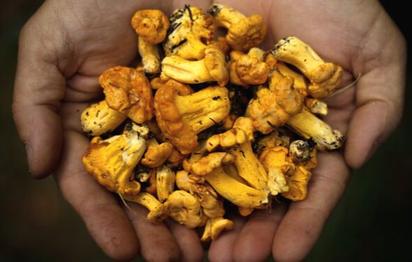
Wild pakoras with water mint raita
Serves 4
For the pakoras:
100g nettle leaves
About 10 pignuts
A handful (approx. 10g) wild garlic
A handful (approx. 10g) hedge garlic
100g yellow pea flour (i.e. chickpea, gram or besan flour)
A good pinch of sea salt
50-75ml water
Light rapeseed oil for deep-frying
For the raita:
300g plain natural yoghurt
2 tbsp chopped water mint
2 tbsp chopped wild garlic leaves
Sea salt and freshly ground black pepper
Blanch the nettle leaves in boiling water to take the sting out of them. Rinse in cold water and give a good squeeze and finely chop.
Scrub and peel the pignuts, then thinly slice. Finely chop wild garlic and hedge garlic, both the flowers and the leaves.
Pile all the wild ingredients into a large bowl. Dust the pea flour over and toss to coat all the greens. Then, gradually pour it the water, adding enough until it all comes together – it should be a rather dry mix to ensure the pakoras are crisp once fried.
Before you start frying the pakoras, mix up your raita. Pour the yogurt into a bowl. Finely chop the water mint and wild garlic. Mix it through and season with salt and pepper, to taste.
To fry the pakoras, pour the oil into a deep, heavy-based saucepan (or a deep-fat fryer) to a depth of 8–10cm and place over a medium heat. The oil should be hot but not too hot to burn the delicate greens.
Scoop the pakora mixture up into walnut-sized nuggets, making sure you have a good distribution of the pignuts. Gently flatten into little patties and place in the hot oil. Cook for 2-3 minutes on each side, until golden brown.
Cook in batches of 6-8, but don’t overcrowd the pan. Drain briefly on kitchen paper and then serve with the raita.
Looking for more foraging recipes?

Foraging expert John Wright, author of three River Cottage Handbooks about foraging, will take you on three, real, forays: along the hedgerow, beside the seashore, and to the fields and woods hunting for mushrooms.
These are, indeed, real forays, with all the hopes, disappointments, limitations of season and joys that we must expect when venturing into the wild for our dinner. They all take place in an autumnal Dorset, but the lessons learned here can be applied to other places and other times.
